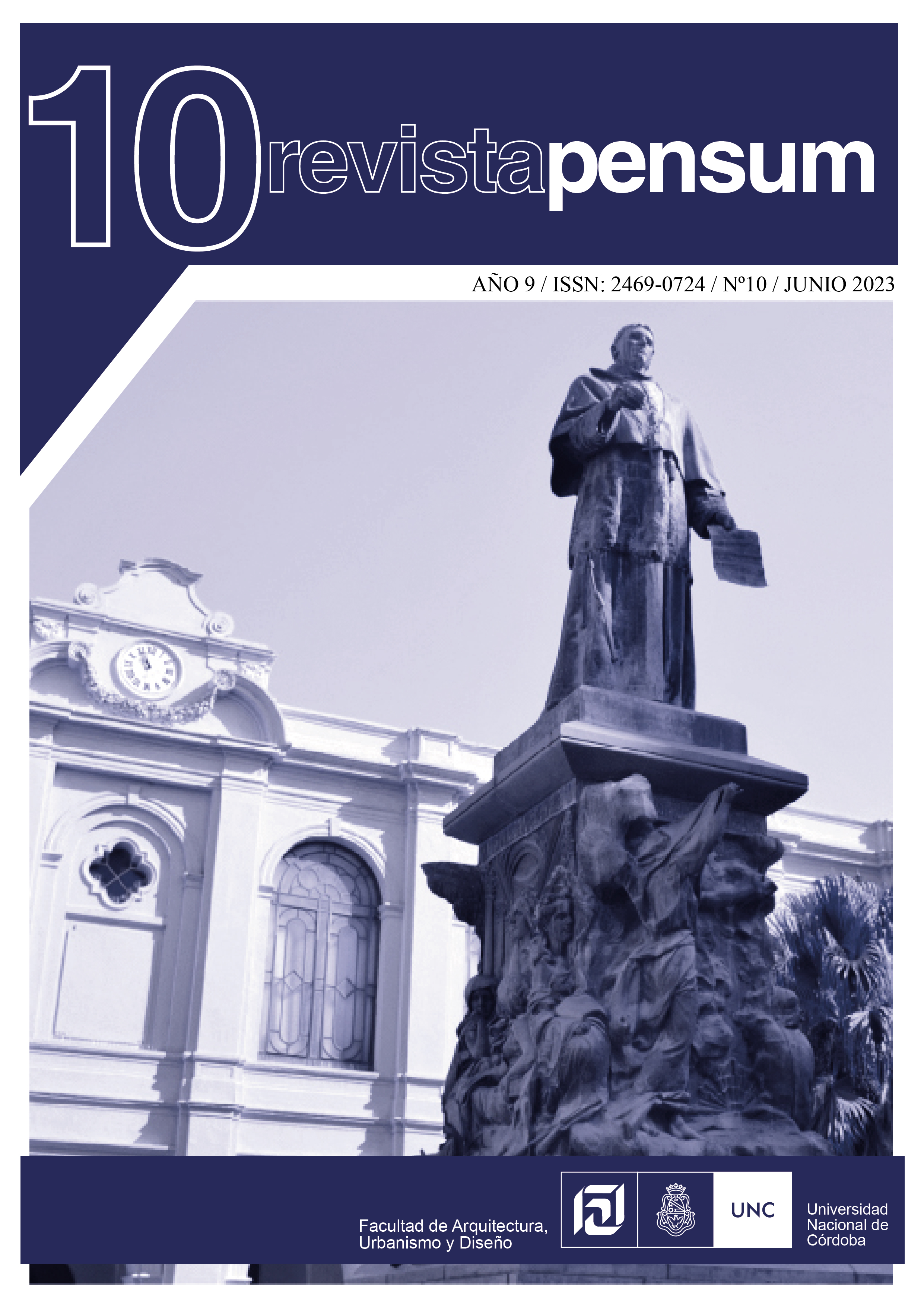Bruno zevi and the “organic space”.
The notion of meaning, aesthetic value, perception and function.
DOI:
https://doi.org/10.59047/2469.0724.v9.n10.35042Keywords:
Bruno Zevi, Walter Curt Behrendt, modern spaceAbstract
In a context of criticism of the formalist aspects that the most mechanistic lines of modern architecture would incur, different proposals arose -around the middle of the twentieth century- that aim at a reintegration of art or the aesthetic dimension into architecture, among them: the so-called organicism. Bruno Zevi, leader of the organic movement in Italy, summons some notions such as interior space or organic space, in order to rescue modern architecture from the stagnation resulting from its conventionalization. In this article we do not intend to make history but to understand -using highly agreed notions that we borrow from pragmatics and critical theory- what is the concept of space that Zevi attends to, why he refers to it using the term organic, and why it is linked to a criterion of functionality. We analyze this notion of space interpreting the writings of Zevi. We delve into his idea of the organic in connection with the ideas of Walter Curt Behrendt, with respect to which he accuses influence. We will review his idea of functionality by comparing his proposal for the reintegration of the aesthetic into architecture with the one formulated by his contemporary Sigfried Giedion. Our thesis is that Bruno Zevi rejects functionalist rationalism as formalist, but he does so using a concept of practical functionality that must be understood as a conventional meaning or as a cultural reference.
Downloads
References
Behrendt, W. C. (1937) Modern Building. Its nature, problems and shape. Harcourt, Brace and Company. Traducción castellana E. L. Revol (1959) Arquitectura Moderna Su naturaleza, sus problemas y formas. Infinito.
Bürger, P. (1974) Theorié der Avantgarden. Shurkamp Verlag. Traducción castellana de J. García (1987) Teoría de la Vanguardia. Ediciones Península.
Giedion, S. (1956) Architektur und Gemennischaft. Rowohlt Verlag. Traducción en castellano: J. M. Coco Ferraris (1957) Arquitectura y Comunidad. Nueva Visión.
Giedion, S. (1941) Space, Time and Architecture: The Growth of a New Tradition. Harvard University Press. Traducción en castellano: J. Sainz (2009) Espacio, tiempo y arquitectura: origen y desarrollo de una nueva tradición. Editorial Reverté.
Habermas, J. (2001) Kommunikatives Handeln und detranszendentalisierte Vernunft. Reclam Verlag. Traducción en castellano: P. Fabra (2002) Acción comunicativa y razón sin transcendencia. Paidós.
Maldonado, T. (1947) “Volumen y dirección de las artes de espacio”. Revista de Arquitectura, 314, 72-75
Zevi, B. (1948) Saper vedere l'architettura. Saggio sull'interpretazione spaziale dell'architettura. Einaudi Editore. Traducción castellana de H. Álvarez (1954) Saber ver la arquitectura. Ensayo sobre la interpretación espacial de la arquitectura. Editorial Emecé.
Zevi, B. (1950) Storia dell'architettura moderna. Einaudi Editore. Traducción castellana de R. Berdagué (1980) Historia de la arquitectura moderna. Poseidon.
Egbert, D. D. (1979) The Beaux-Arts Tradition in French Architecture. Princeton University Press.
Published
How to Cite
Issue
Section
License
Copyright (c) 2023 Natalia Destefanis, Fernando Fraenza

This work is licensed under a Creative Commons Attribution-ShareAlike 4.0 International License.
Authors who publish in this journal agree to the following terms:
a. Authors retain copyright and guarantee to the journal the right to be the first publication of the work as well as licensed under a Creative Commons Attribution-ShareAlike 4 license.
b. Authors may separately establish additional agreements for non-exclusive distribution of the version of the work published in the journal (e.g., placing it in an institutional repository or publishing it in a book), with an acknowledgement of its initial publication in this journal.
c. Authors are permitted and encouraged to disseminate their work electronically (e.g., in institutional repositories or on their own website) before and during the submission process, as this may result in productive exchanges, as well as earlier and greater citation of published work (See The Effect of Open Access).
d. 4.0 International Creative Commons Attribution-ShareAlike 4.0 License.












